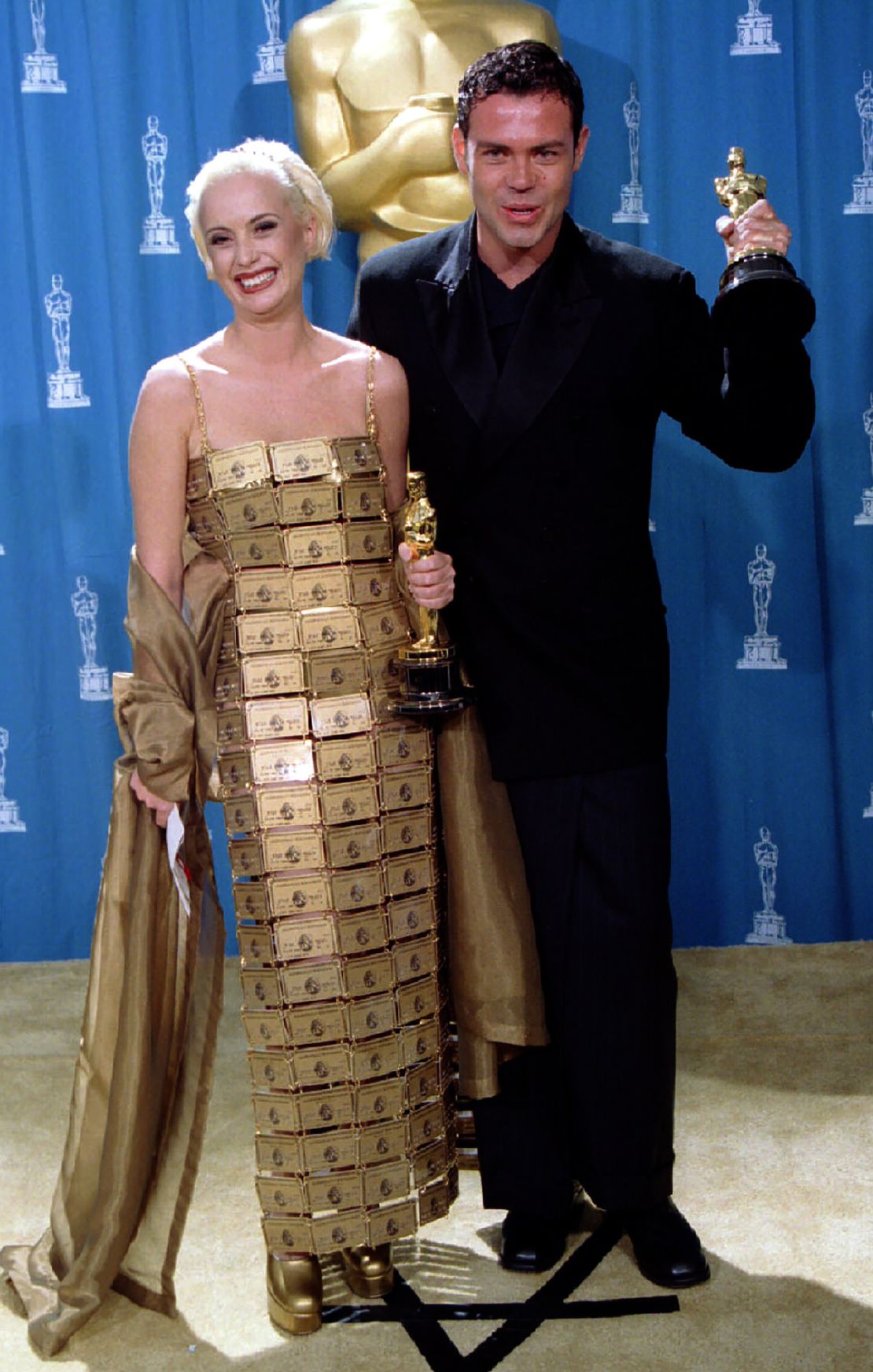Editor’s Note: Delving into the archives of pop culture history, “Remember When?” is a CNN Style series offering a nostalgic look at the celebrity outfits that defined their eras.
Remember when Australian costume designer Lizzy Gardiner caused a stir at the 67th Academy Awards by stepping onto the red carpet in a gown crafted from 254 American Express Gold cards?
Her shimmering spaghetti strap floor-length outfit, complete with gold underwear and matching platforms, left an indelible mark on Oscars fashion history. And for those wondering, they were all authentic — albeit expired — Amexes. (Time Magazine reported that while every card bore Gardiner’s name, each one lacked a digit, rendering them invalid.)
It was 1995 and Gardiner, who was practically unknown to Hollywood at the time, was up for Best Costume Design for her work on “The Adventures of Priscilla, Queen of the Desert.” She had originally envisaged a credit card dress being worn by one of the movie’s three cross-dressing protagonists, but American Express and multiple other banking companies reportedly turned down the opportunity to have their cards appear in the production. (She ended up using a dress made from flip flops instead).

“I’m broke, and I didn’t have anything to wear,” Gardiner is said to have told red-carpet reporters of the genesis of her Oscars outfit. “So I went through my list of past good ideas.”
She later told The New York Times that she was “looking for an American symbol,” adding: “A Coca-Cola bottle or a Mickey Mouse would have been ridiculous, doing anything with the American flag would have been insulting and Cadillac hubcaps were just too uncomfortable.”
When she and fellow costume designer Tim Chappel walked on stage to collect their award, host David Letterman joked, “I’m tellin’ ya, American Express can’t buy publicity like that.”
The company had, this time around, given Gardiner permission to use their cards. American Express — which was, incidentally, one of the event’s sponsors — sent over 300 cards that she and Salvador Perez, a designer from Los Angeles, assemble into a gown in approximately 12 hours, she told the Times.

A month after the event, an American Express spokeswoman explained why the company had approved Gardiner’s dress for the Oscars, but not the movie, stating: “It’s different. She’s not dressing a character. She’s dressing herself.” Not long after, American Express said it had bought the dress from Gardiner for an undisclosed price, according to the LA Times.
A statement gown
Gardiner’s dress was widely interpreted as satirical jab at the excesses of Hollywood. She recently confirmed that it was indeed a “sartorial protest,” telling the Hollywood Reporter this year that the credit cards “said something about someone’s wealth and standing.”
The eye-catching gown was also well-received on the night, with critics commending her fashion choice as bolder than that of the red carpet’s better-known celebrities. At the time, The New York Times wrote that on “an evening notable for its lack of outrageous attire” Gardiner managed to “make a vivid impression.”
Others were less complimentary. Time magazine later named the dress as one of the worst gowns in Oscars history, branding it “tacky” and wondering “how did she sit down in that thing?”
But the gown’s influence has resonated through fashion to this day. In 2017, American label Vaquera paid homage to Gardiner by reimagining her creation (with Vaquera-branded dummy credit cards) on the runway. Vogue observed at the time that the design tackled “coming-of-age topics with an absurdist angle.” A replica of Gardiner’s iconic dress, created by the designer and American Express, even found its way to the auction block at Christie’s for a charity auction, where it fetched $12,650.

Gardiner later reflected on the outfit in a 2017 interview, telling Australia’s ABC News that it “really upset a lot of people,” adding: “A lot of women, I think they felt upstaged or pissed off that I wasn’t taking things as seriously as I should.”
Today, the iconic dress is housed in the National Gallery of Victoria in Australia — a piece of fashion history and a reminder that you don’t need to be a household name to make a splash on Hollywood’s grandest stage.
As for the amount of publicity that American Express reaped from the extravaganza? That’s priceless.




